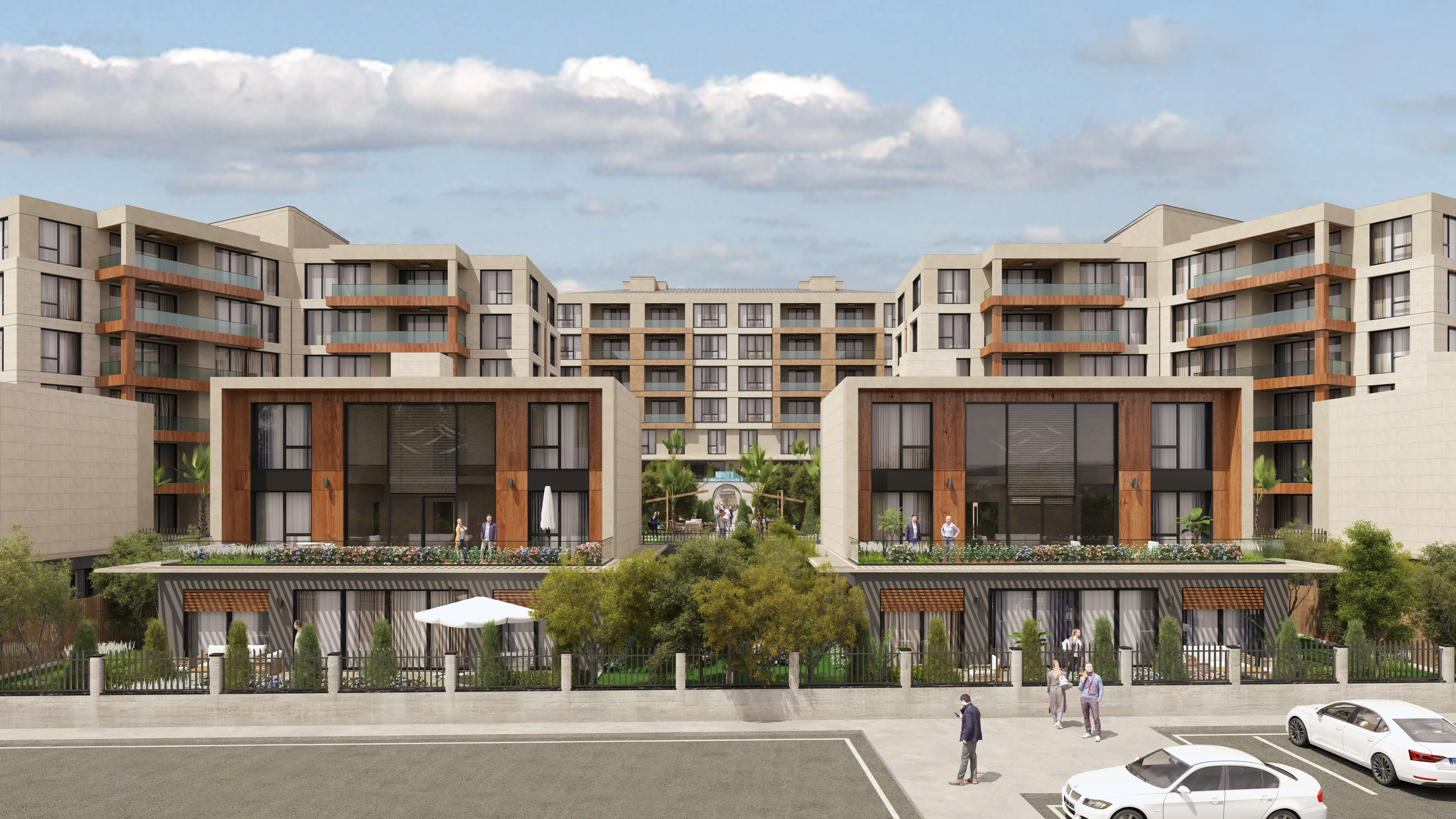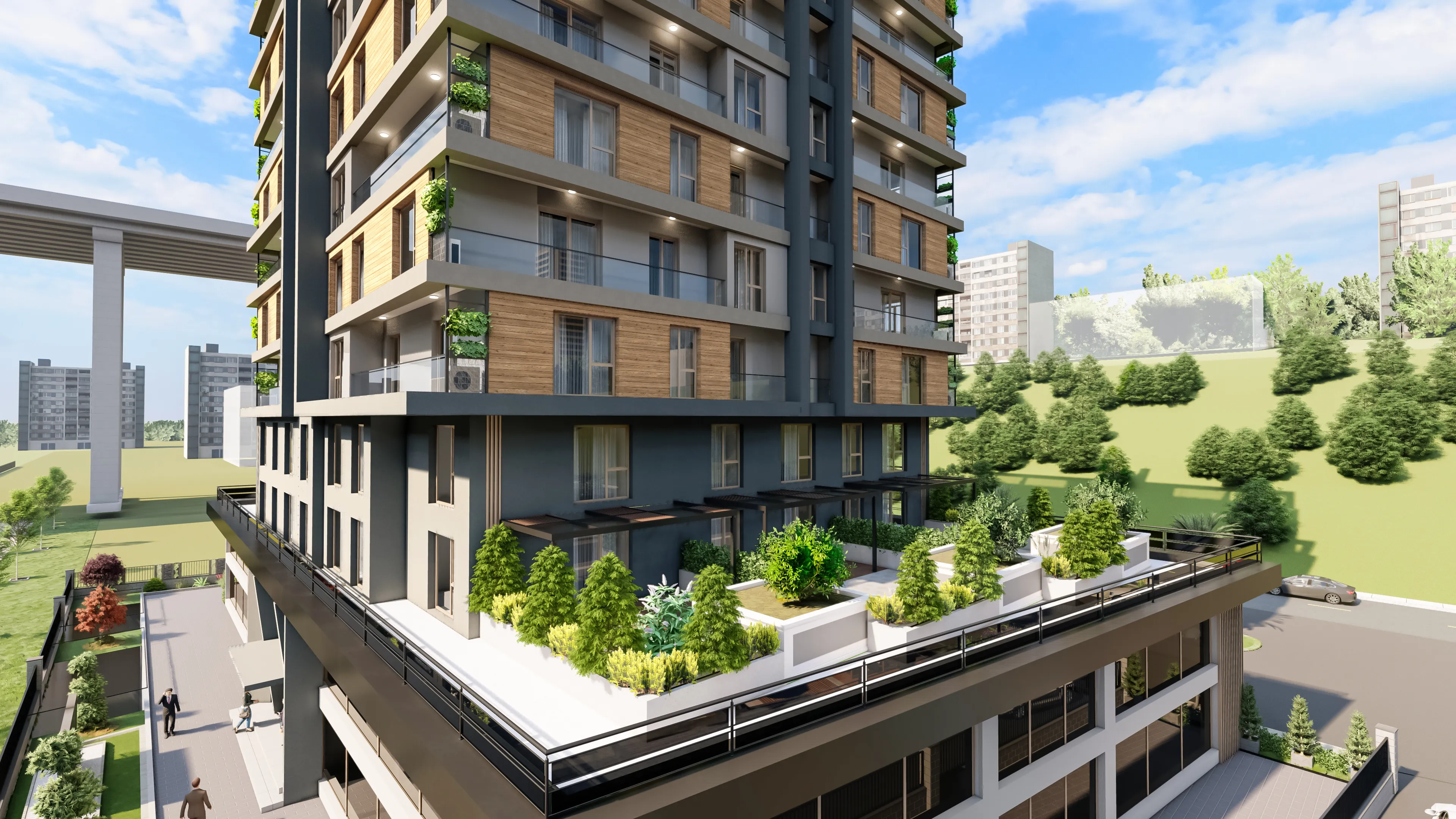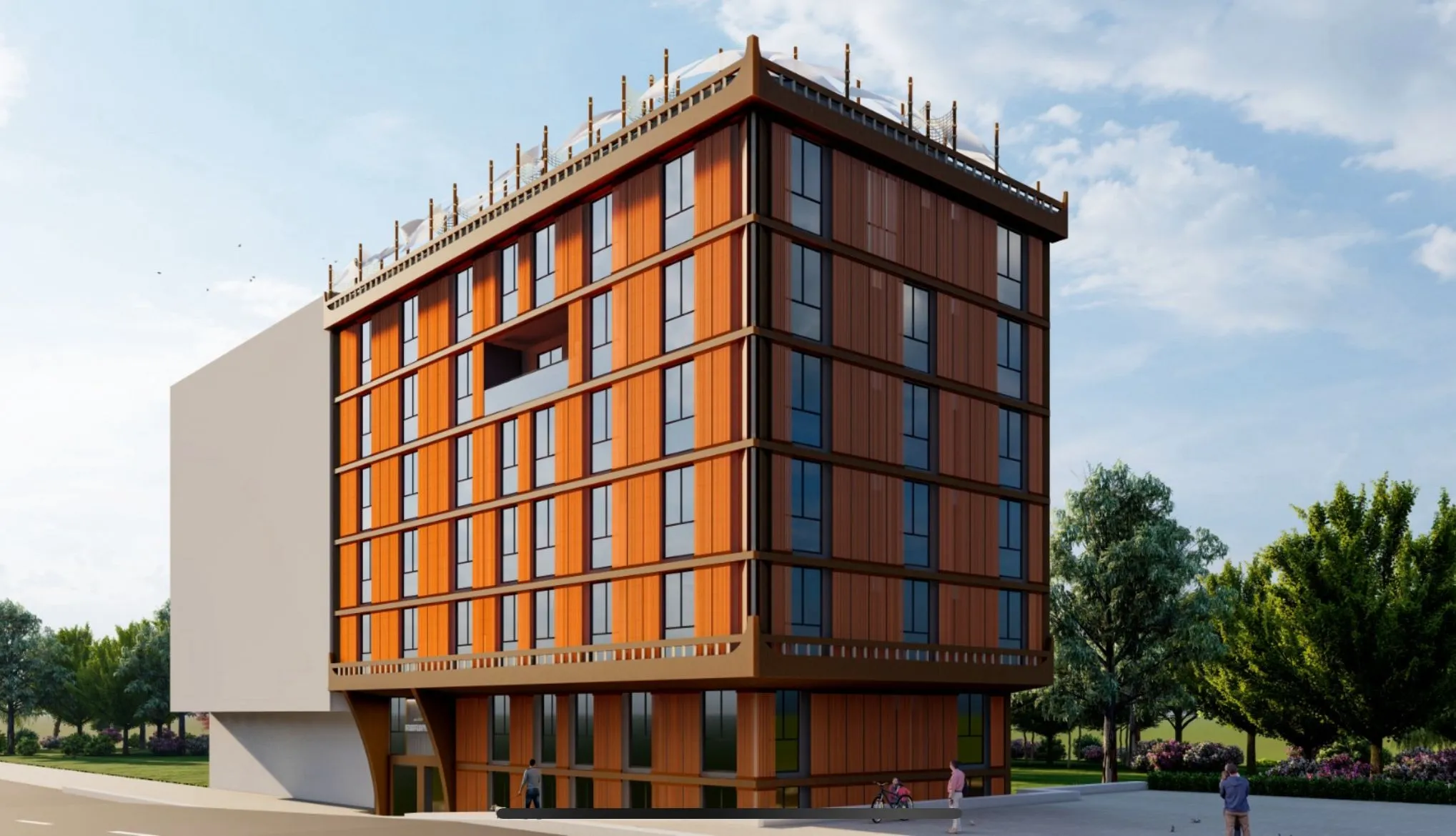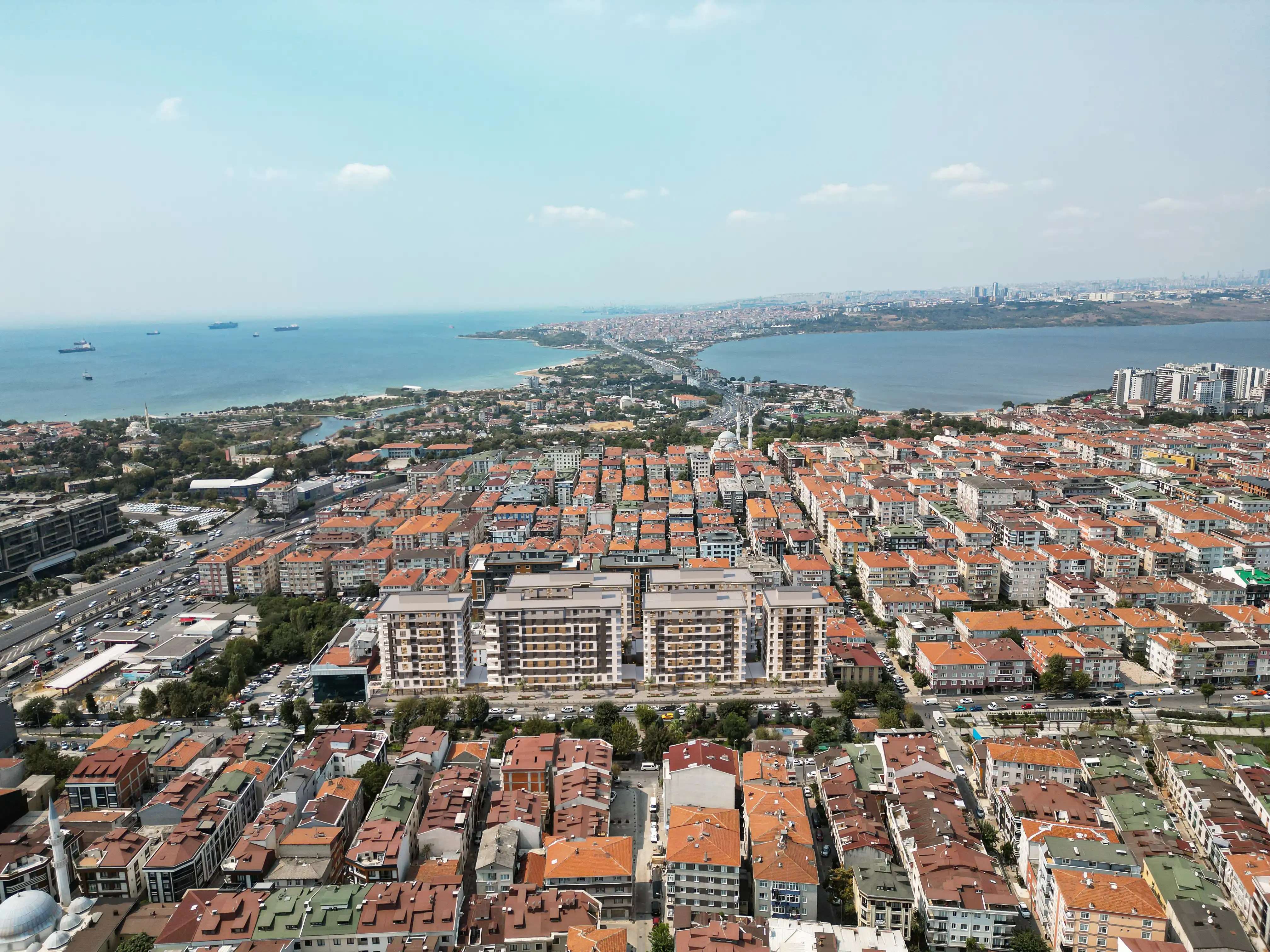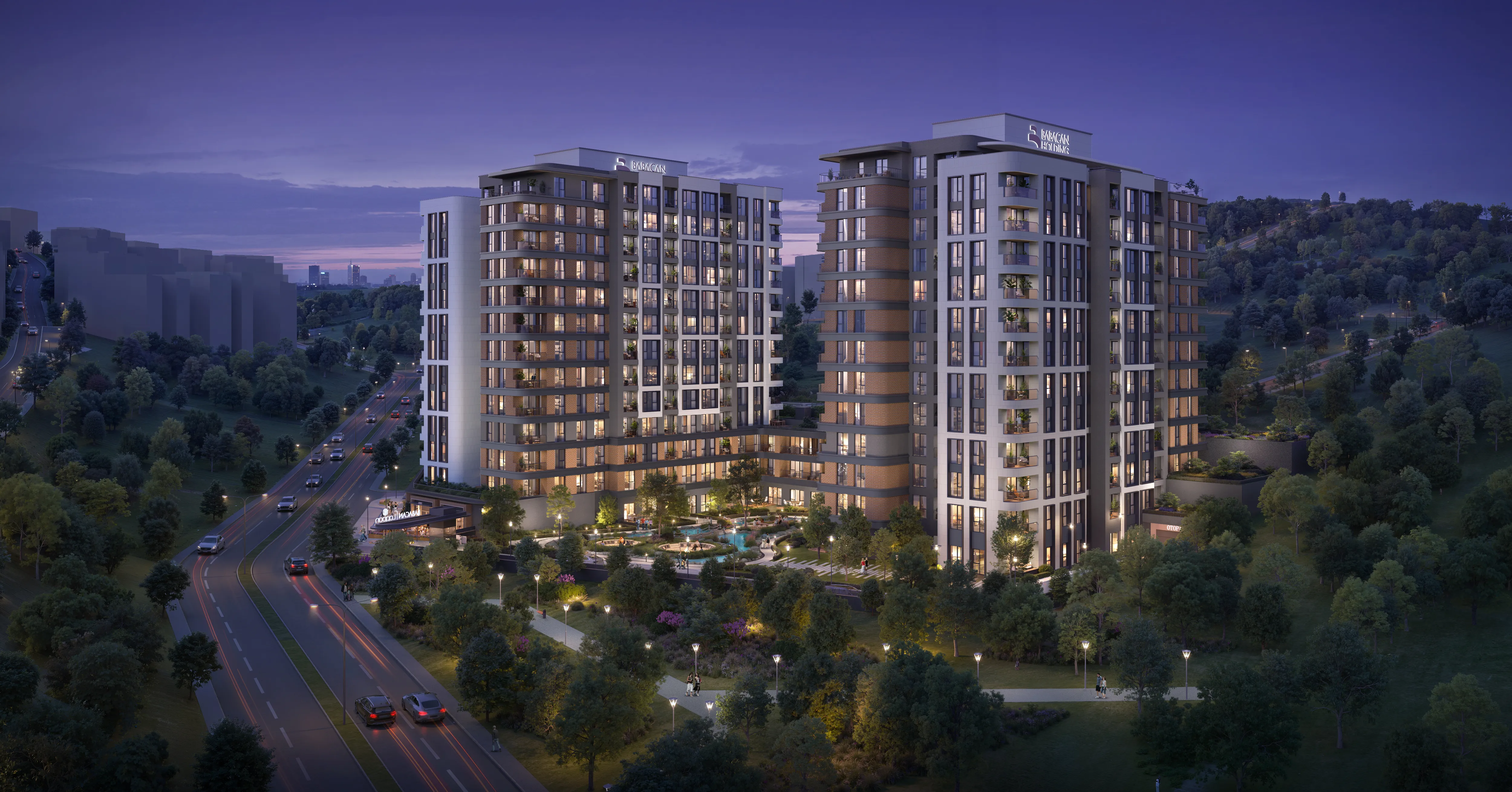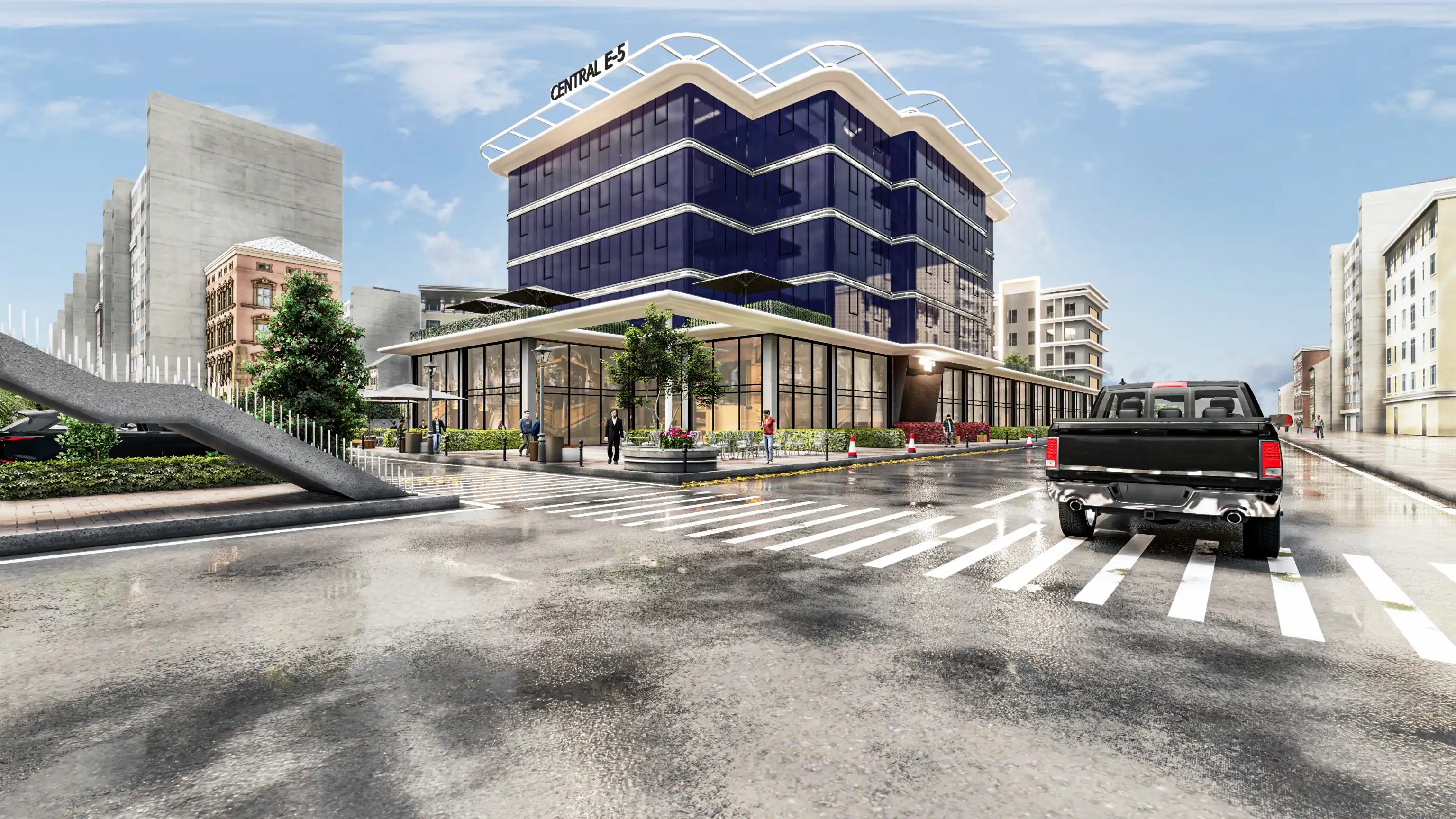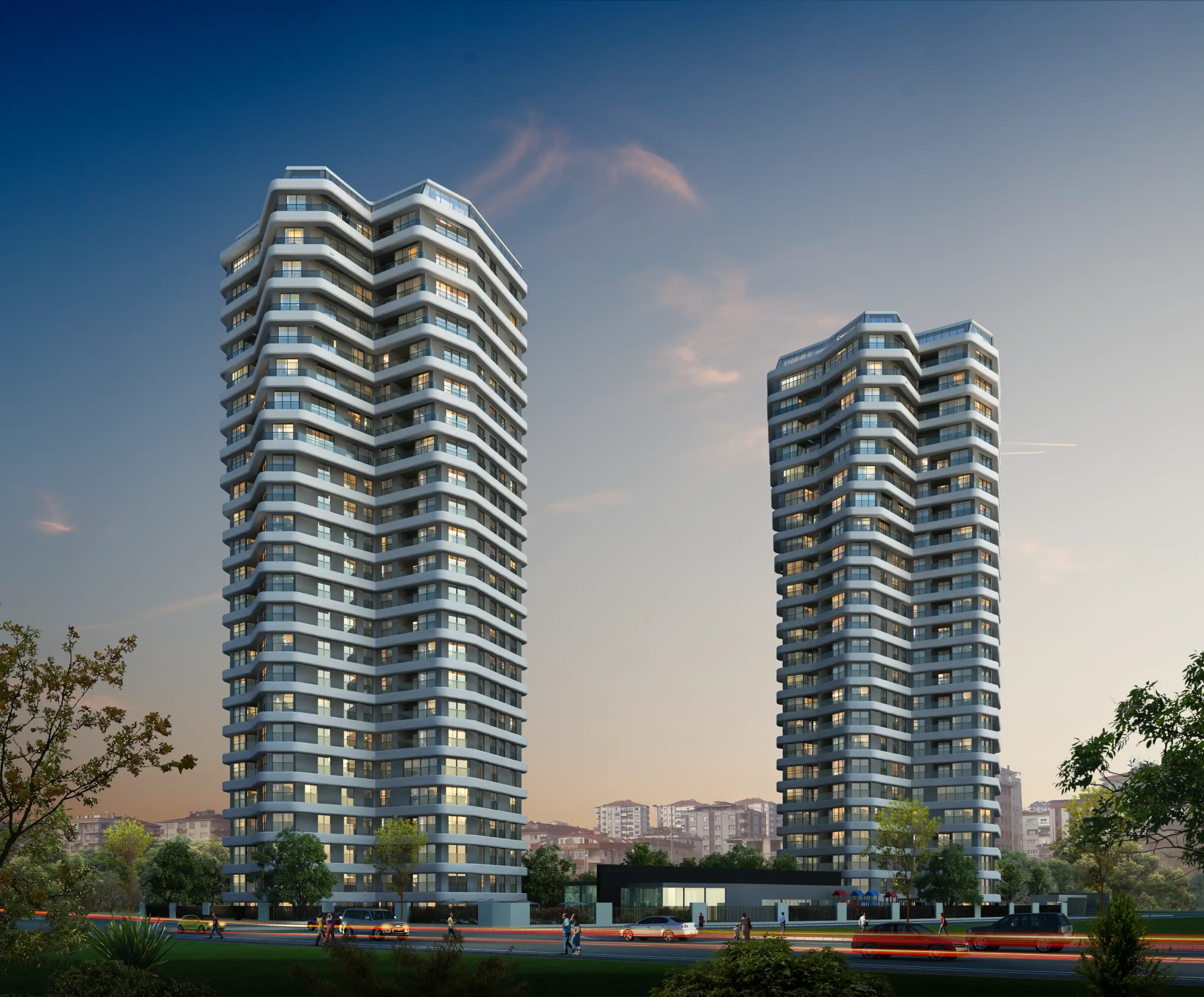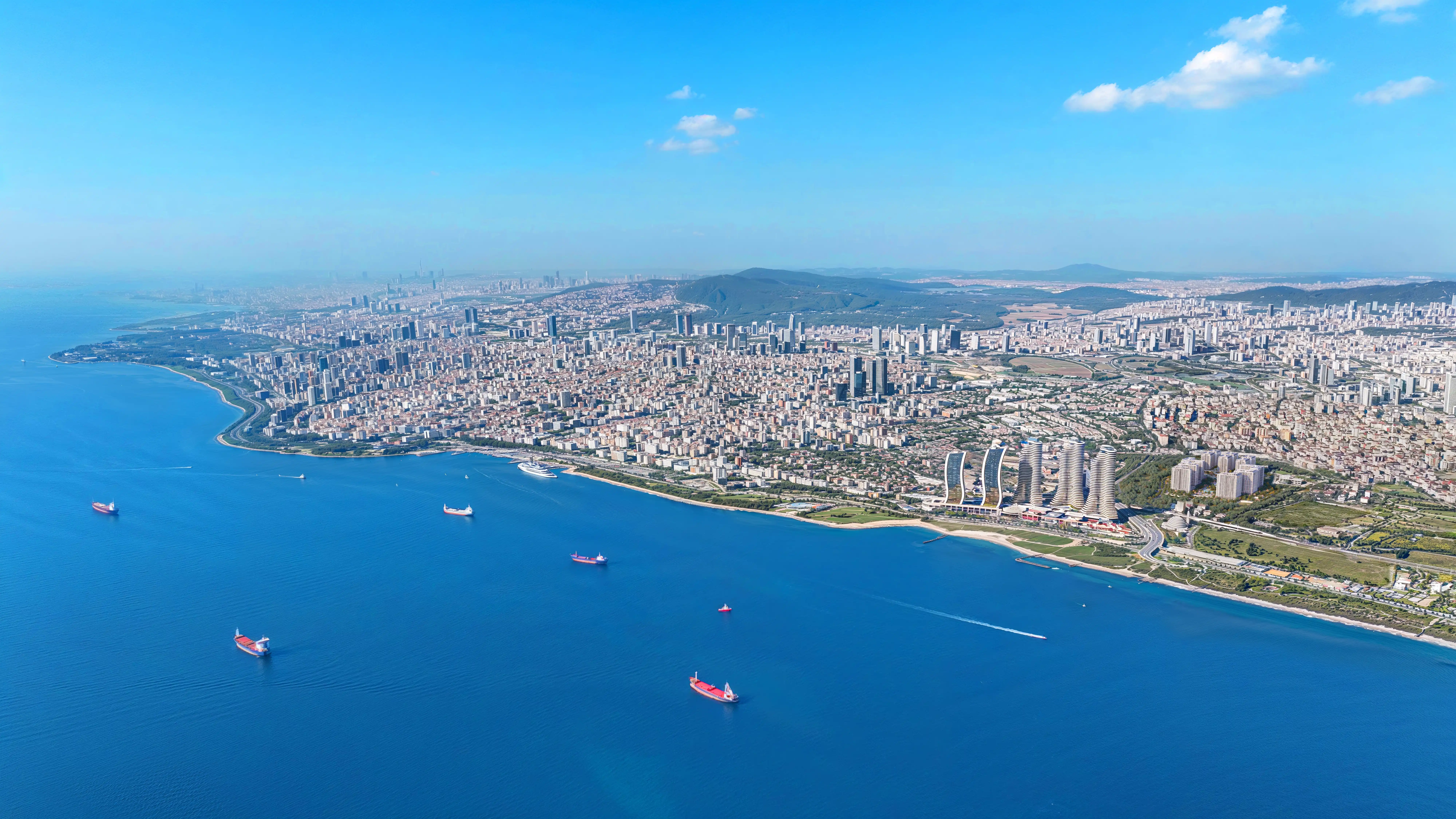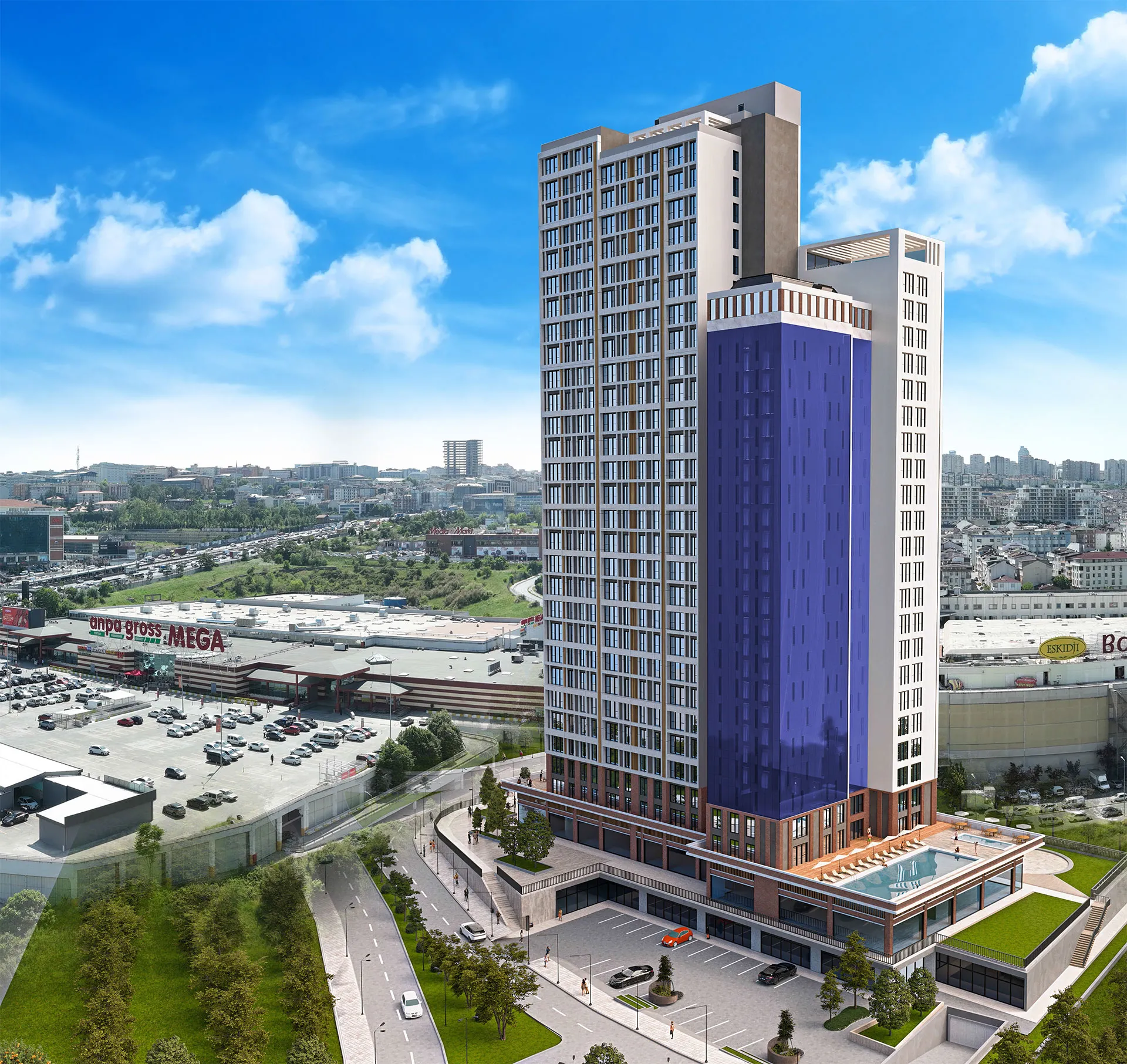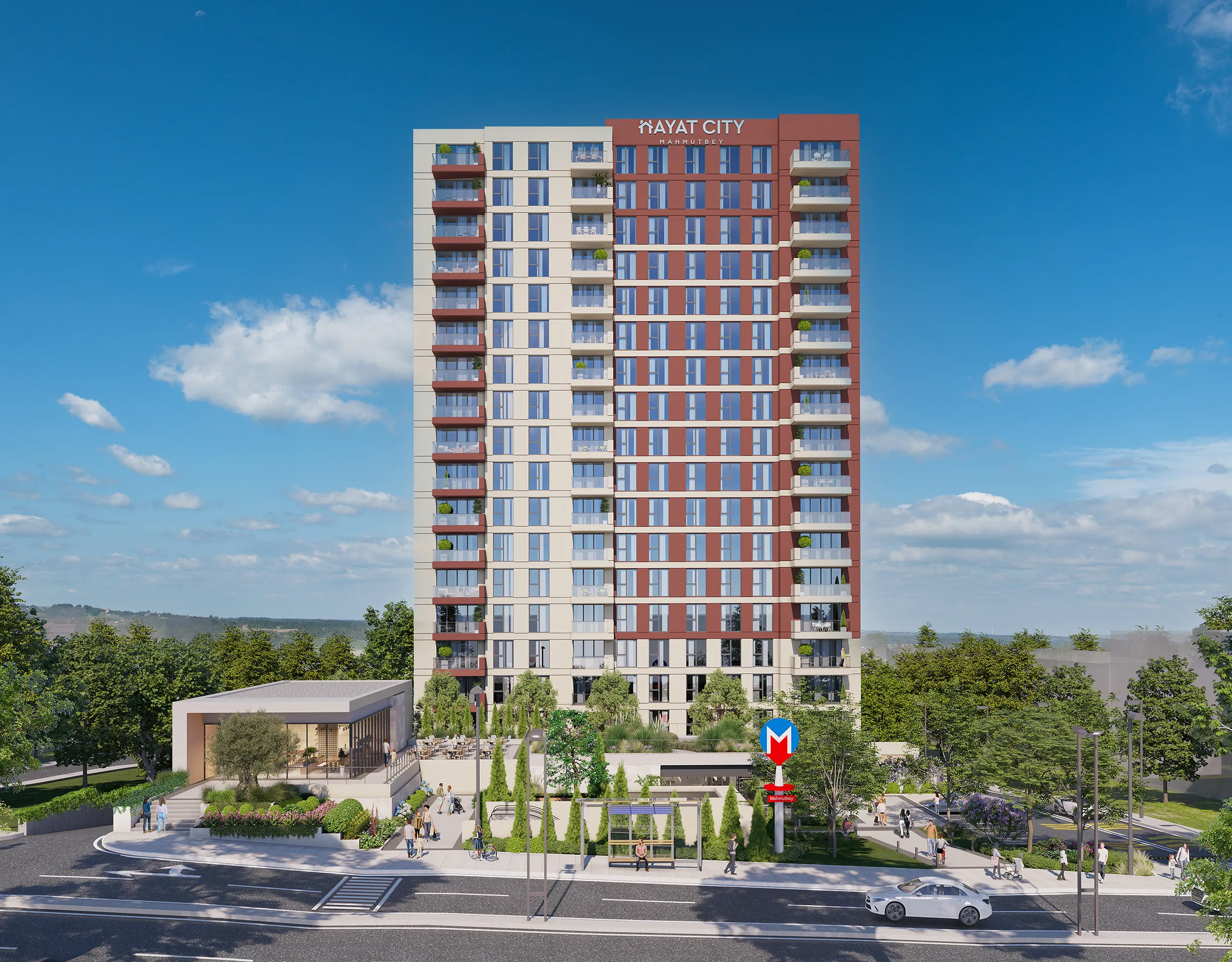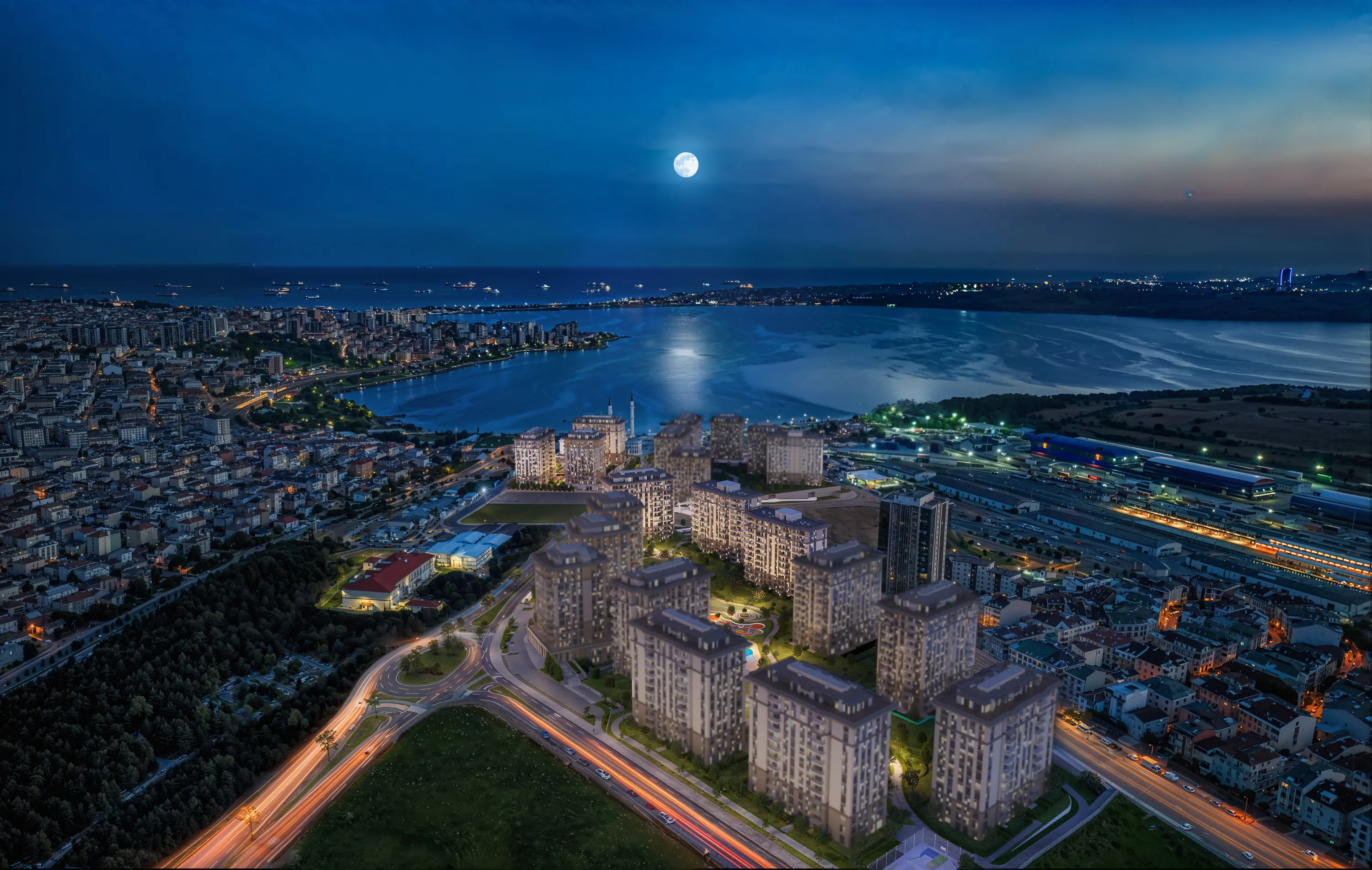Apartment Prices in Istanbul (2025): Real Estate Trends, District Guide & Investment Tips
Discover the latest apartment prices in Istanbul for 2025, from luxury neighborhoods to affordable suburbs. Get detailed market insights, district comparisons, rental yields, and tips for foreign buyers.
.jpg)
Introduction
Istanbul. The city that straddles two continents, home to history, culture, and... skyrocketing real estate prices. It’s no secret that Istanbul has emerged as one of the most dynamic property markets not just in Turkey but in all of Europe. With a population exceeding 15 million and demand for housing showing no signs of slowing down, apartment prices here are a hot topic.
But what exactly makes Istanbul’s real estate market so attractive? Is it the stunning views of the Bosphorus, the tax incentives for foreign investors, or the promise of Turkish citizenship through investment? In reality, it’s a cocktail of all these factors—and more. This article explores everything you need to know about apartment prices in Istanbul, with deep insights and practical takeaways. Whether you're a potential investor or just curious, this guide will break it all down for you.
Current State of the Istanbul Apartment Market
Average Apartment Prices in 2025
If you've been eyeing Istanbul real estate, you'll notice that prices have surged in recent years. As of mid-2025, the average apartment price in Istanbul hovers around TRY 55,500 per square meter, which translates to approximately USD 1,520 per m². This average, however, doesn’t tell the full story—prices vary drastically based on the neighborhood, size of the unit, building amenities, and proximity to transit and the coastline.
Compared to 2024, the city has seen a nominal price growth of nearly 30%. But here’s the catch: when you adjust for Turkey’s double-digit inflation rate, real property prices have actually decreased by around 8.8%. So, while your property may be worth more in lira, its purchasing power may have stayed the same—or even diminished—when converted to foreign currency.
What’s also important to note is that price growth hasn’t been uniform across the city. Luxury and central zones have seen the highest appreciation, while suburban areas remain more stable but attractive for budget-conscious buyers and investors looking for high rental yields.
Price Variation by District
Let’s break down what you can expect to pay in different parts of the city:
1. Premium Areas
If you're looking for high-end living or prime investment opportunities, these are your go-to neighborhoods:
Nişantaşı, Bebek, Etiler, Sarıyer, and Şişli: These areas scream luxury. Prices can soar to USD 5,000–7,000 per m², especially if the property has a sea view or sits along the Bosphorus.
These districts are popular among foreign investors and upper-class locals alike. They offer luxury condos, top-tier schools, shopping avenues, and a high standard of living.
2. Mid-Range Zones
Want to strike a balance between affordability and convenience?
Üsküdar, Zeytinburnu, and Kağıthane: Here, prices typically range from USD 1,500–2,500 per m². These areas are undergoing redevelopment, meaning potential for long-term appreciation is strong.
Kağıthane, in particular, has transformed from a working-class district into a business hub.
3. Affordable Suburbs
On a tighter budget? Consider the outer districts.
Esenyurt, Beylikdüzü, and Başakşehir: Property prices here range between USD 800–1,200 per m². These zones are more popular with middle-income families and offer new housing projects at lower costs.
While these areas lack the prestige of central zones, they offer solid rental yields and increasing urban infrastructure.
Each of these zones serves a different purpose—whether it's luxury living, balanced family life, or budget-conscious investing.
Factors Influencing Apartment Prices in Istanbul
Supply and Demand Trends
The price of real estate in any city boils down to a basic economic principle: supply and demand. Istanbul, with its booming population and limited available land in key areas, experiences significant housing demand that far outweighs supply—especially in the more desirable districts. This imbalance is one of the strongest forces behind rising apartment prices.
Over the past decade, Istanbul has seen rapid urbanization. Entire neighborhoods have been redeveloped with new apartment complexes, malls, hospitals, and metro lines. While this has increased the housing stock, the sheer number of people moving to the city has kept demand high. Additionally, there's a growing trend of small families and young professionals preferring to buy smaller units, which has driven up per square meter prices.
On top of local demand, there's considerable international interest. Investors from the Middle East, Russia, and increasingly Europe and Asia are buying up units for vacation homes, rental income, or simply to obtain Turkish citizenship. This influx of foreign buyers has further tightened the market.
Despite the construction boom, there remains a significant housing shortage, especially in affordable and mid-range segments. And while government projects aim to add more stock, bureaucratic delays and rising construction costs keep supply limited.
Government Regulations and Incentives
One of the biggest game-changers in Istanbul’s real estate market has been the citizenship by investment program. Foreign nationals can obtain Turkish citizenship by purchasing real estate worth at least USD 400,000. This policy alone has brought in billions in foreign capital, particularly from Gulf nations, Central Asia, and increasingly from Europe.
Moreover, the Turkish government has implemented various buyer-friendly policies, including:
Reduced title deed fees
Tax exemptions for foreign buyers
Eased mortgage rules, including access to bank loans for non-residents
These incentives not only attract new investors but also stabilize the market by ensuring continuous foreign capital inflow. In addition, urban renewal projects initiated by the government have turned rundown neighborhoods into attractive new residential areas, pushing property prices upward.
However, critics argue that these policies may also be making it harder for local residents to afford homes, particularly in Istanbul’s central districts. As prices surge, middle-income families are pushed toward the outer suburbs.
Inflation and Economic Conditions
Turkey has been facing high inflation for several years now, and this has profound implications on real estate pricing. While nominal prices have surged, real value growth (adjusted for inflation) has been significantly lower—sometimes even negative.
In early 2025, the annual inflation rate was hovering above 40%, meaning that while your property might be "worth more" on paper, its purchasing power in USD or EUR may not have increased as much. This complexity can confuse buyers and distort expectations.
At the same time, fluctuations in the Turkish Lira make investing in real estate a hedge against currency devaluation for locals. That’s why, even during economic downturns, real estate continues to attract domestic capital.
Foreign investors, on the other hand, benefit from favorable exchange rates. For someone bringing in dollars or euros, Istanbul’s property market becomes increasingly affordable, especially in lira terms. This arbitrage opportunity continues to drive cross-border investments.
Rental Market Overview
Average Rents by Area and Apartment Size
If you’re not looking to buy, renting in Istanbul can still be quite a financial commitment—especially in 2025. Rental prices have climbed significantly in the past year due to inflation, high interest rates making mortgages less accessible, and a shrinking supply of rental units.
Here's a quick snapshot of monthly rents (average):
| Apartment Type | Budget Area (₺) | Mid-Range (₺) | Luxury Area (₺) |
|---|---|---|---|
| Studio | ₺15,000 | ₺22,000 | ₺30,000+ |
| 1-Bedroom | ₺20,000 | ₺30,000 | ₺45,000+ |
| 2-Bedroom | ₺30,000 | ₺40,000 | ₺60,000+ |
| 3-Bedroom+ | ₺35,000+ | ₺50,000+ | ₺75,000+ |
Areas like Beşiktaş, Kadıköy, and Sarıyer see some of the highest rental rates due to their desirability and amenities. On the other hand, Esenyurt, Avcılar, and Tuzla remain more affordable options.
Rental Yields and Return on Investment
Despite the high property prices, Istanbul still offers attractive rental yields compared to many other global cities. The gross rental yields (annual rent divided by property price) vary based on location:
Luxury central zones: 4.5% – 6%
Emerging or mid-tier areas: 6% – 8%
Budget suburbs: up to 12%
This makes certain districts especially lucrative for buy-to-let investors. For example, a 1-bedroom apartment purchased for USD 100,000 in Beylikdüzü could potentially bring in USD 800 per month, translating into a gross yield of around 9.6%.
However, maintenance costs, vacancy risks, and property management fees can lower net returns. Still, in a city with rising rents and high tenant demand, rental investments remain a solid long-term strategy.
Cost of Living and Affordability
Average Salaries vs Housing Costs
While real estate may be booming, the average Istanbulite faces a growing affordability crisis. The average monthly net salary in Istanbul is around ₺25,000–₺30,000, which is less than what it takes to rent a 1-bedroom apartment in central zones.
This affordability gap means:
Most locals either rent in outer districts or continue living with family longer.
Homeownership rates are dropping among younger generations.
Many people rely on shared housing or cooperative purchases.
The mismatch between income and housing costs is one of the biggest socio-economic challenges facing Istanbul today. While international investors can easily afford properties in lira, local buyers are increasingly priced out of the market.
Monthly Expenses for Residents
Here’s a typical breakdown of monthly costs for a single person living in Istanbul in 2025:
| Expense Type | Average Cost (₺) |
|---|---|
| Rent (1-bed, mid) | ₺30,000 |
| Utilities | ₺3,500 |
| Groceries | ₺7,000 |
| Transportation | ₺1,200 |
| Internet & Mobile | ₺500 |
| Entertainment | ₺2,000 |
| Total | ₺44,200 |
Given these figures, it’s clear that the cost of living is straining household budgets. While Istanbul still ranks lower than Western European capitals in overall living costs, it’s rapidly catching up—especially in terms of rent and food prices.
Real Estate Trends in 2025
Market Growth Trends
Despite global uncertainties and domestic economic pressures, Istanbul’s real estate market has demonstrated remarkable resilience in 2025. Over the past year, nominal property values in the city have risen approximately 30%, though real gains (after inflation) remain closer to -8%.
What's interesting is that the rate of growth is not uniform across property types. New-build properties, especially those in high-demand zones, have outpaced older buildings in terms of appreciation. Developers are leaning heavily into mixed-use projects—apartment complexes with shopping centers, gyms, and social areas—to meet modern lifestyle demands.
Another major shift has been the surge in off-plan purchases. Buyers are snapping up units before construction completes, betting on future appreciation. This trend is popular among both domestic buyers and foreign investors seeking lower upfront costs and flexible payment plans.
A further notable trend is the rise of green and smart buildings. Sustainability and energy efficiency are starting to influence purchase decisions, especially among younger, more environmentally-conscious buyers.
Foreign Investment Surge
Turkey's real estate market has become a magnet for foreign investors, and Istanbul leads the pack. The citizenship-by-investment policy remains the primary draw, but it's not the only one.
In 2025, the top foreign buyers in Istanbul include:
Iranians
Russians
Iraqis
Germans
Kazakhstanis
These investors are not just chasing residency benefits—they're also looking for stability, currency hedging, and long-term asset growth. Istanbul offers all that, along with a strategic location between Europe and Asia.
The weak Turkish Lira also makes Istanbul's property market relatively affordable to foreign buyers using stronger currencies. A luxury flat that might cost $1 million in Dubai or Paris could be acquired for a third of that in Istanbul with comparable specs.
Additionally, foreign ownership laws are liberal. There are very few restrictions on where foreigners can buy property, and the process is generally fast and transparent—especially with legal and real estate agents offering all-in-one investment packages.
District-Level Analysis of Apartment Prices
Luxury Zones
If you’re dreaming of upscale living in Istanbul, a few neighborhoods stand out for their blend of prestige, location, and lifestyle.
1. Nişantaşı
Price range: USD 5,000–7,000 per m²
Istanbul’s equivalent of Beverly Hills or the Upper East Side.
Surrounded by designer stores, high-end restaurants, and historic architecture.
2. Bebek
Waterfront location along the Bosphorus.
Extremely limited land makes it highly exclusive.
Prices easily cross USD 6,000 per m².
3. Sarıyer
Ideal for villas and larger family homes.
Close to nature but well-connected.
Targeted by wealthy locals and foreign elites alike.
These areas are ideal for long-term value retention, though they may offer lower rental yields due to high entry costs.
Mid-Tier Neighborhoods
For a balance of accessibility and potential growth, mid-tier districts offer great value.
1. Kağıthane
Once industrial, now booming with new developments.
Prices around USD 2,000 per m².
Offers excellent access to metro lines and business districts.
2. Ümraniye
Rapidly evolving on the Asian side.
Good schools and new transport links.
Prices between USD 1,700–2,300 per m².
3. Zeytinburnu
Known for coastal projects.
Gentrification is pushing prices upward.
Excellent connectivity via Marmaray train.
These neighborhoods are favored by professionals, middle-class families, and buy-to-let investors aiming for high tenant demand and moderate appreciation.
Budget-Friendly Areas
If you're a first-time buyer or looking for strong rental yields, consider Istanbul’s more affordable zones.
1. Esenyurt
A favorite for middle-income locals and expatriates.
USD 800–1,200 per m².
Large-scale housing complexes with modern amenities.
2. Beylikdüzü
Quiet, suburban lifestyle but with improving infrastructure.
Prices from USD 900 per m².
Good for long-term investment.
3. Avcılar
Close to universities and major highways.
Inexpensive housing with growing demand from students and renters.
While these districts lack the glamor of central Istanbul, they often deliver superior rental returns, especially when bought during early stages of development.
Here's the apartment price table for Istanbul districts based on the number of rooms (in USD - average prices in 2025) translated into English:
Table: Average Apartment Prices in Istanbul by Number of Rooms (USD – 2025)
| District | Studio | 1-Bedroom | 2-Bedroom | 3+ Bedrooms |
|---|---|---|---|---|
| Nişantaşı | $250,000 | $300,000 | $450,000 | $700,000+ |
| Bebek | $270,000 | $350,000 | $500,000 | $800,000+ |
| Sarıyer | $200,000 | $280,000 | $400,000 | $650,000+ |
| Kağıthane | $80,000 | $120,000 | $180,000 | $250,000+ |
| Zeytinburnu | $100,000 | $150,000 | $220,000 | $300,000+ |
| Ümraniye | $90,000 | $140,000 | $200,000 | $280,000+ |
| Esenyurt | $45,000 | $65,000 | $90,000 | $130,000+ |
| Beylikdüzü | $50,000 | $70,000 | $100,000 | $140,000+ |
| Avcılar | $55,000 | $75,000 | $110,000 | $150,000+ |
| Başakşehir | $70,000 | $100,000 | $160,000 | $220,000+ |
✅ Key Notes:
These are average market prices based on new and resale properties as of 2025.
Sea view, metro proximity, or premium amenities can increase prices by 15%–30%.
Off-plan or under-construction properties may offer more competitive prices and flexible installment plans.
Luxury zones like Bebek and Nişantaşı offer prime lifestyle benefits but with lower rental yields.
Budget-friendly districts like Esenyurt or Avcılar offer higher rental yields and faster tenant demand, ideal for investors.
Buying Property as a Foreigner
Legal Requirements and Processes
Buying an apartment in Istanbul as a foreigner is relatively straightforward. Here’s what you need to do:
Get a Tax Number: Required for all financial transactions.
Open a Turkish Bank Account: Helps in transferring money securely.
Hire a Legal Consultant: Vital for contract review, due diligence, and translation.
Title Deed (TAPU): Must be checked for clear ownership.
Property Appraisal Report: Mandatory for foreigners.
Notary Process: Ensures legal binding of documents.
Foreigners can buy up to 30 hectares of property in Turkey, as long as it’s not near military zones. You don’t need to be a resident to own property, and you can rent it out immediately.
Financing Options Available
If you don’t want to pay the full amount upfront, there are several financing routes:
Local Banks: Some Turkish banks offer mortgages to foreigners, typically requiring:
30–50% down payment
Proof of income
Valid passport and residence documents
Developer Financing: Many developers offer in-house installment plans with 0% interest for up to 60 months.
International Mortgages: Limited but possible through specialized global lenders.
Be aware that Turkish mortgage interest rates are relatively high (often exceeding 20% annually), so paying in cash or using developer financing is often more cost-effective.
Future Outlook for Istanbul's Real Estate Market
Predictions for 2026 and Beyond
What lies ahead for Istanbul’s real estate scene? While it's impossible to predict with 100% certainty, several trends are shaping the market's direction:
Continued foreign demand, especially if the citizenship threshold remains at $400k.
Smart urban projects in areas like Başakşehir and Kartal will push up prices.
Inflation and lira volatility may continue, but demand for tangible assets like property remains robust.
Tourism rebound will also revive short-term rental demand, boosting ROI for investors.
Experts believe Istanbul will remain a real estate hotspot, particularly for those investing with a long-term view.
Conclusion
Istanbul’s apartment prices in 2025 reflect a city in transition—caught between tradition and modernity, affordability and luxury, local needs and international demand. Whether you're a foreign investor, a Turkish citizen, or just someone considering a move, understanding the nuances of Istanbul's real estate market is crucial.
From luxury flats in Bebek to affordable investments in Esenyurt, Istanbul offers something for everyone. But the key is doing your homework—study the districts, understand the regulations, factor in inflation, and think long-term. With the right approach, investing in Istanbul could be one of the smartest financial moves you’ll make.
Ready to Invest in Istanbul? Let’s Make It Happen
Istanbul’s real estate market is rich with opportunity—but timing, location, and knowledge are everything. Whether you're dreaming of a stylish Bosphorus-view apartment or looking to capitalize on Istanbul’s rental market, now is the time to act.
✅ Need personalized investment advice?
✅ Looking for a trustworthy agent or legal partner?
✅ Want access to off-market or developer-exclusive deals?
👉 Contact me today for a free consultation and start your property journey in Istanbul the smart way.
Don’t miss out—opportunity doesn’t knock twice in Istanbul’s fast-moving market.
FAQs
1. Is buying an apartment in Istanbul a good investment in 2025?
Yes, especially for long-term investors. The city’s strategic location, high rental yields, and foreign-friendly policies make it a strong investment destination.
2. Which are the best districts to buy property in Istanbul?
For luxury: Bebek, Nişantaşı, Sarıyer. For balance: Ümraniye, Kağıthane. For affordability: Esenyurt, Beylikdüzü.
3. How much does a 1-bedroom apartment cost in Istanbul in 2025?
Depending on the area, it ranges from USD 45,000 in the suburbs to over USD 250,000 in central districts.
4. Are there restrictions for foreigners buying property in Turkey?
Very few. Foreigners can buy most types of real estate except in military zones. Legal procedures are well-regulated and investor-friendly.
5. What is the average rental yield in Istanbul?
Rental yields vary from 4.5% to 12%, with the highest returns found in emerging and affordable districts.
Have Question Or Suggestion ?
Please Share Your Thought, To Make It Real
